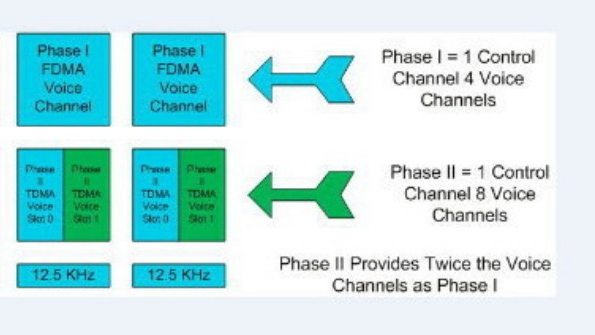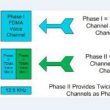Why Project 25 Phase II TDMA still is relevant
What is in this article?
The impact of P25 Phase II TDMA
The P25 Phase II standards were developed under the consensus process of the Telecommunications Industry Association (TIA), in conjunction with subject-matter experts from public-safety and industry user groups. Public-safety agencies represented by participants from the federal government, APCO, the National Association of State Telecommunications Directors (NASTD) and others agencies retain final authority regarding what constitutes a P25 standard.
During standards development, consideration was given to providing graceful migration from Phase I to Phase II equipment and to maintaining backwards compatibility with Phase I equipment that already had been fielded. This allows system operators to maintain both Phase I and Phase II equipment on the same network. Interoperability is maintained by managing operational modes at the system level. Talk groups can be restricted to Phase I only or Phase II only. Operation also can be “dynamic,” in that Phase I will be utilized when there are Phase I subscriber radios affiliated with the talk group (i.e., the lowest common denominator).
P25 Phase I utilizes frequency division multiple access (FDMA) technology to separate talk paths. The P25 Phase I signal operates at 9600 bits per second (bps) and occupies 12.5 kHz of bandwidth (1 voice channel/12.5 KHz). The P25 vocoder in this mode operates at 7200 bps.
In contrast, P25 Phase II technology utilizes time division multiple access (TDMA) technology to separate talk paths. It also leverages a more efficient waveform, which allows the data rate to be increased to 12,000 bps in the 12.5 KHz channel. The increased bit rate is primarily required to support the additional signaling associated with the second voice channel. The channel is then separated into two time slots, providing twice the spectral efficiency—2 voice channels/12.5 kHz—as Phase I. P25 Phase II also takes advantage of improvements in vocoder technology, utilizing a half-rate vocoder that operates at 3600 bps. Additionally, improvements in forward error correction (FEC) technology are employed.
Figure 1 provides a comparison between Phase I and Phase II operation. Note that technology improvements in Phase II systems yield a bit-rate efficiency of 2400 bps and, when coupled with vocoder and FEC improvements, maintain operational performance in real-world public-safety environments.

Figure 1: Phase I vs. Phase II
Source: RELM Wireless
Figure 2 illustrates the capacity gain achieved from using Phase II equipment over Phase I. It is important to note that this capacity gain does not require any additional radio or transmission equipment than is necessary with Phase I. As a result licensing, operation and maintenance for Phase II systems is comparable to that for Phase I. For agencies that currently maintain enough voice channel capacity, converting to Phase II offers the ability to add P25 data channels without reducing voice capacity—thereby increasing overall efficiency.
Figure 2: TDMA vs. FDMA
Source: RELM Wireless
Meanwhile, a casual review of pricing for Phase II-capable infrastructure appears to show that the per-channel costs for the repeater and network equipment is approximately equal to the Phase I channel costs. In addition, Phase II-capable subscriber radios appear to command only a 5-10% premium over the cost of Phase I radios.
All things considered, the overall deployment costs for Phase II equipment are more expensive than Phase I equipment by only a small margin; moreover, Phase II equipment is attractively priced when compared with adding additional FDMA voice channels.










